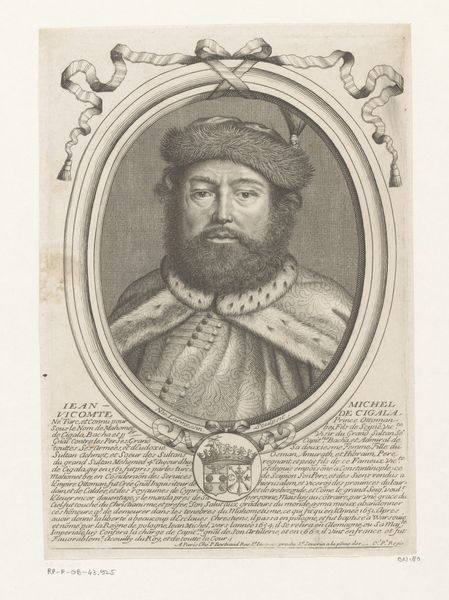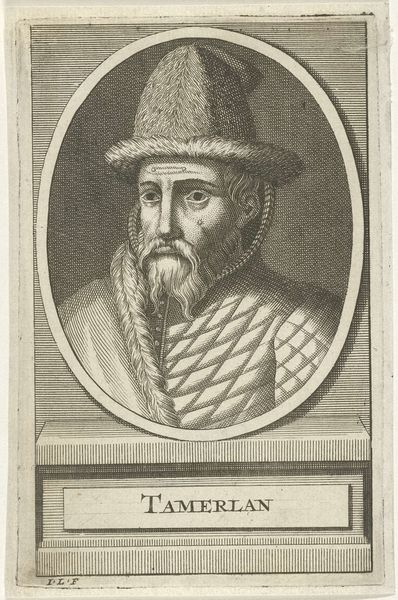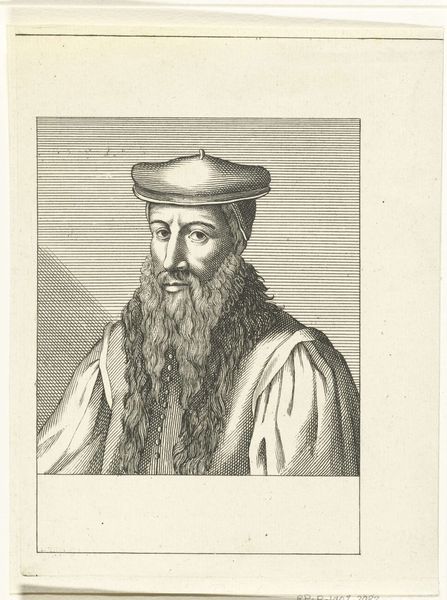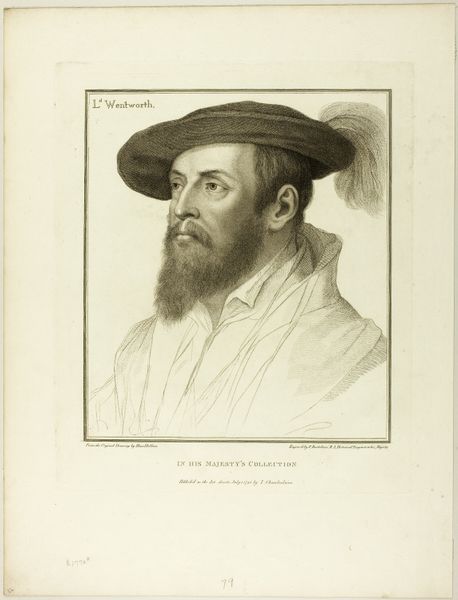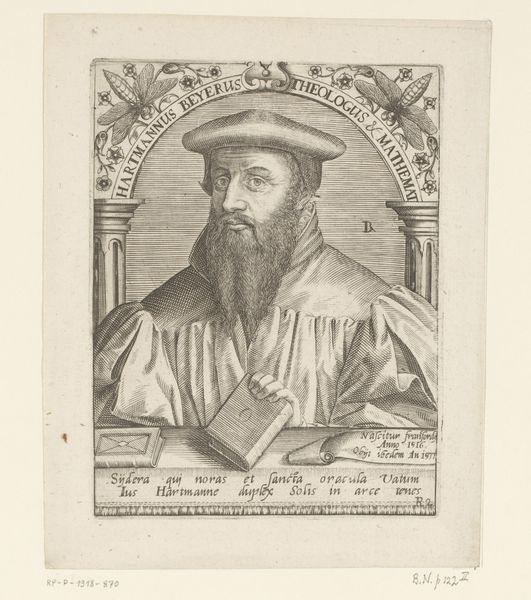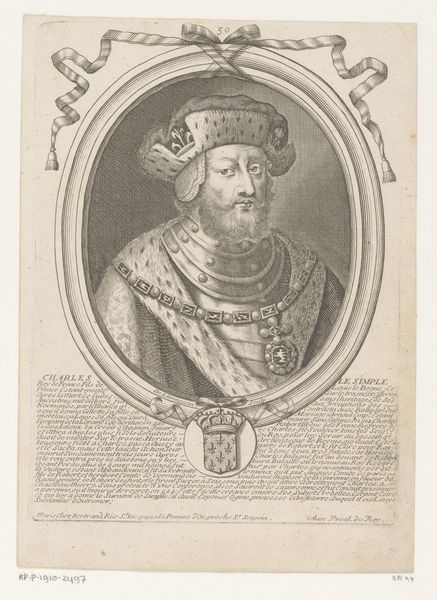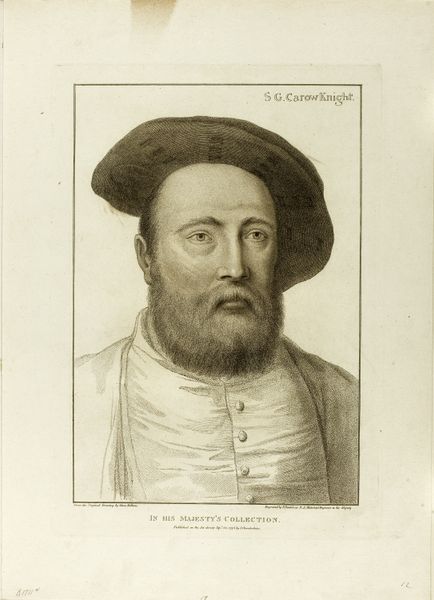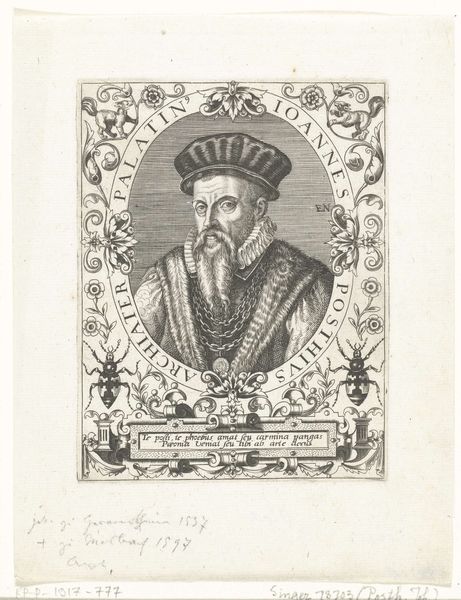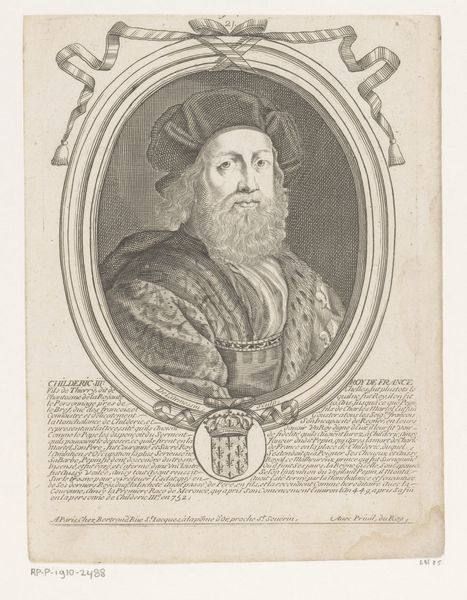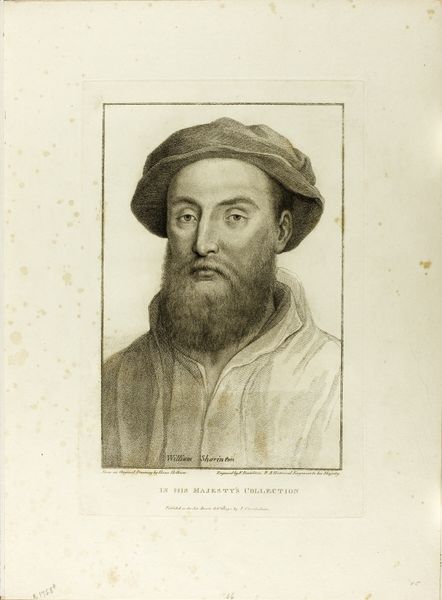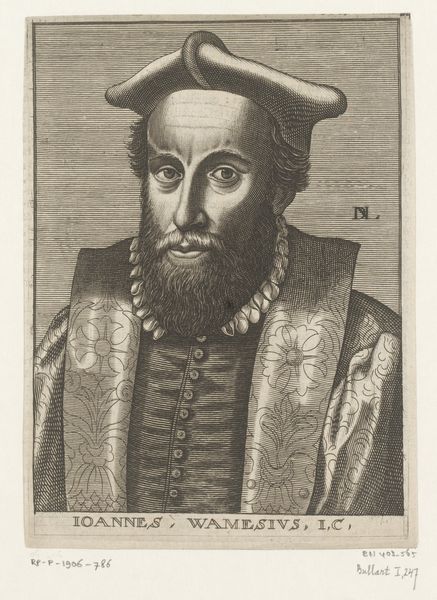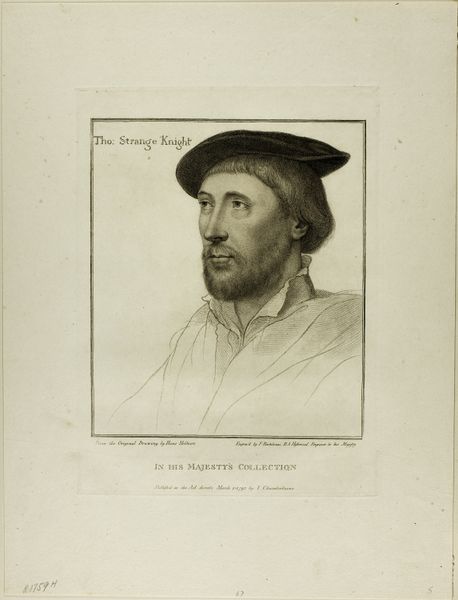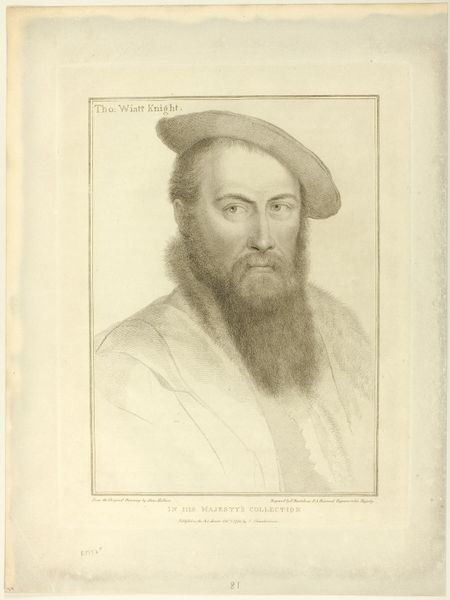
drawing, print, paper, engraving
#
portrait
#
drawing
#
self-portrait
# print
#
paper
#
portrait drawing
#
engraving
Dimensions: 398 × 298 mm (image); 457 × 327 mm (plate); 539 × 406 mm (sheet)
Copyright: Public Domain
Curator: I'd like to draw our listeners' attention to this piece entitled "Ormond," a portrait dating back to 1794-1797. Francesco Bartolozzi rendered this print, a meticulous engraving on paper now held in the Art Institute of Chicago's collection. Editor: It has this lovely sepia tone—a certain aged dignity comes to mind. It makes you feel like you're uncovering something from the past. The sharp, clean lines are remarkable, especially considering it is an engraving. You get a very palpable sense of texture of fabrics as well. Curator: Texture indeed, achieved by remarkably intricate and deliberate mark-making. Beyond the texture, the clothing, particularly his cap and distinctive garment— perhaps an indicator of status or rank, point toward symbolic representations of identity. Notice the way the engraver paid careful attention to shadow and light. Editor: That focus on texture does reveal how integral skilled labor was for this style of art and even to portraiture at the time. Engraving took time and precision. Was it common for engravers to recreate or work from existing portrait paintings? It feels like we are looking at a copy, of something grander. Curator: Indeed, printmaking played an increasingly pivotal role in disseminating images and ideals of notable figures, making art more accessible but also crafting narratives for a wider audience. The "Ormond" we see here likely reproduced a painted portrait, extending the subject's reach. The very inclusion in "His Majesty's Collection," proudly stated on the print itself, confirms the cultural significance attached. Editor: That mention of "His Majesty's Collection" gets to the heart of it! Mass production means it’s ultimately tied to consumption and, in this instance, royal endorsement. Even a simple portrait carries embedded ideologies when we examine its modes of production and its ultimate purpose. Curator: Precisely. It invites us to contemplate how representation—visually and materially—shapes our perceptions and perpetuates collective memories. What impressions, do you imagine, "Ormond" sought to convey through distribution? Editor: Perhaps a sense of refined artistry married to controlled replication—the dignity of craft serving imperial purposes? An interesting dialogue to ponder. Curator: Indeed, this work provides such avenues for thought. A humble image on paper carrying weight, not only through the hand of the engraver but with cultural and historical memory, preserved and disseminated for centuries to come.
Comments
No comments
Be the first to comment and join the conversation on the ultimate creative platform.
